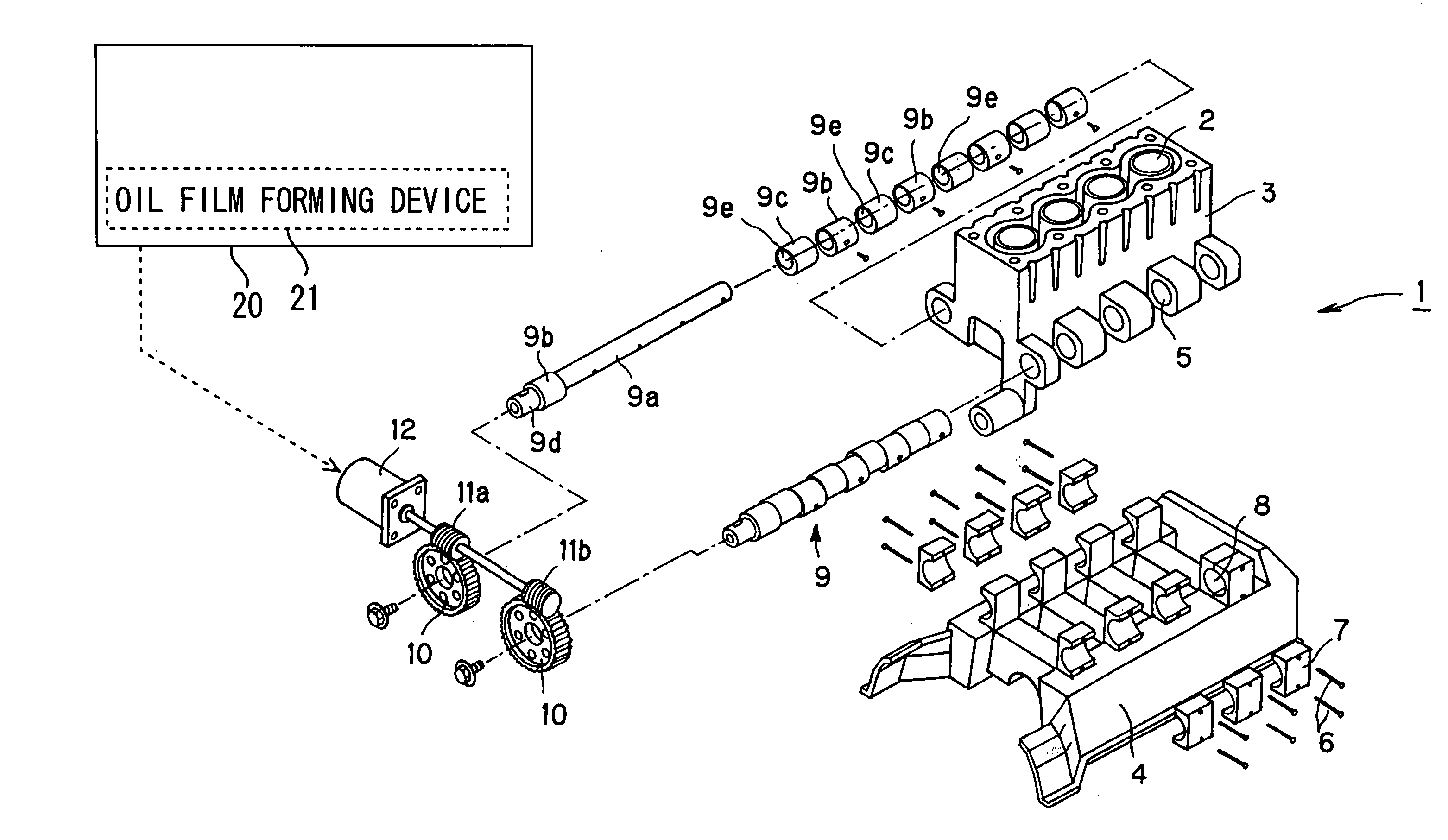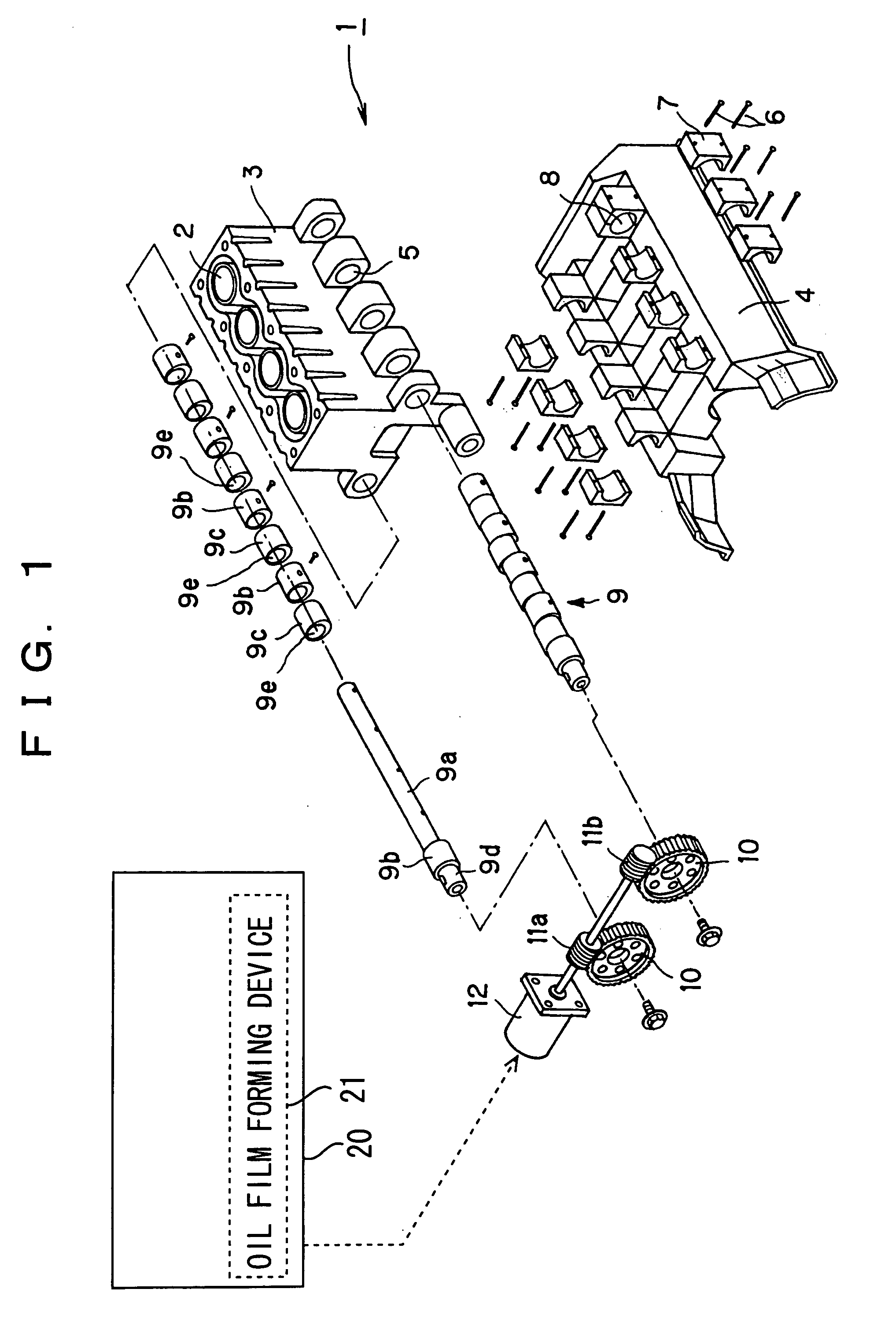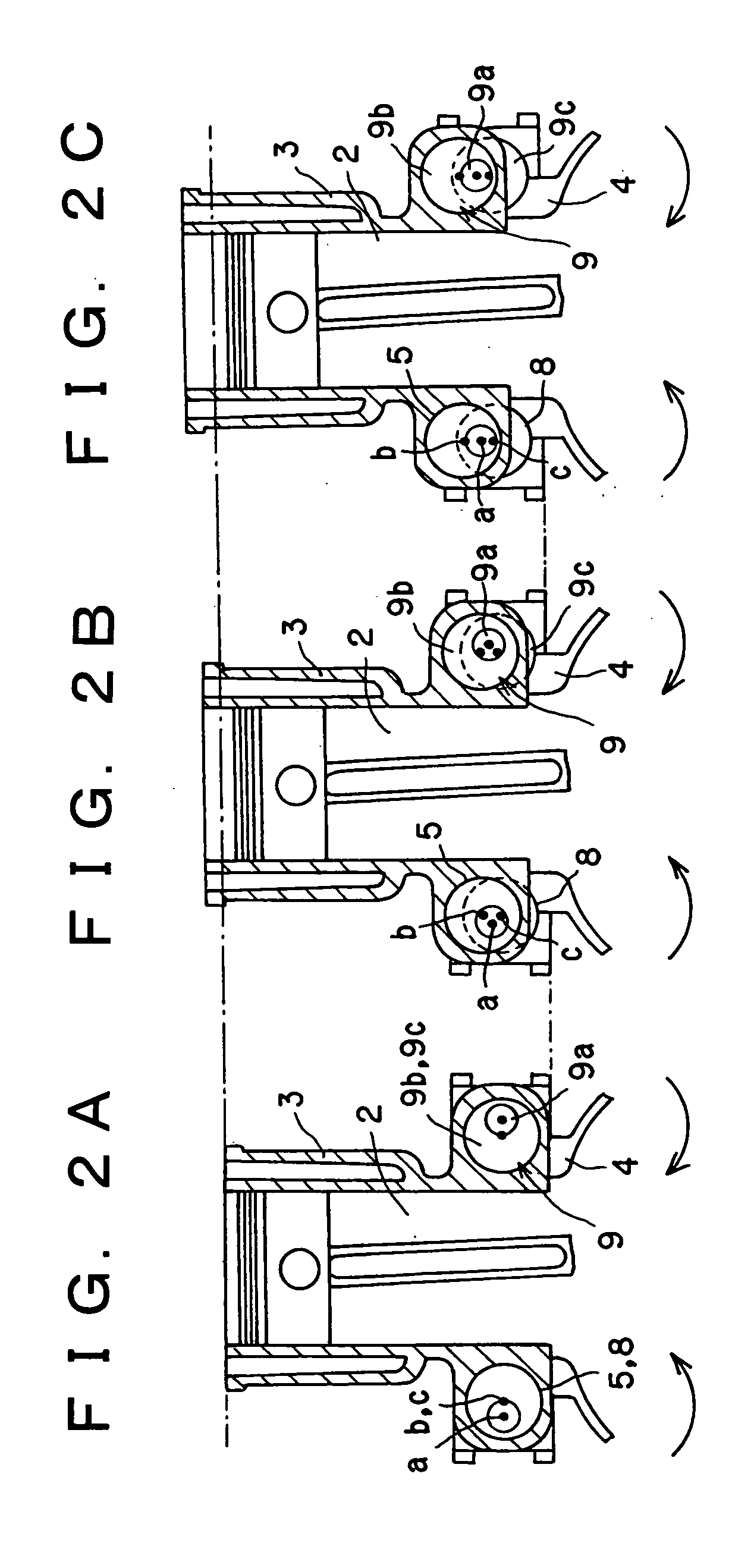Variable compression ratio mechanism
a compression ratio and variable technology, applied in the direction of auxillary lubrication, electric control, combustion engines, etc., to achieve the effect of large acceleration and fine control of the amount of movemen
- Summary
- Abstract
- Description
- Claims
- Application Information
AI Technical Summary
Benefits of technology
Problems solved by technology
Method used
Image
Examples
embodiment 1
[0084] [Embodiment 1]
[0085] An internal combustion engine, which is generally designated at reference numeral 1 and will be described below, is a variable compression ratio type internal combustion engine whose compression ratio is changed by moving a cylinder block 3 with a plurality of cylinders 2 relative to a crankcase 4 coupled with unillustrated pistons in the axial direction of the cylinders.
[0086] First of all, reference will be made to the construction of the variable compression ratio type internal combustion engine according to a first embodiment of the present invention by using FIG. 1. As shown in FIG. 1, the cylinder block 3 has a plurality of projected portions formed at the lower opposite sides thereof, with a cam receiving hole 5 being formed in each of the projected portions. Each of the cam receiving holes 5 takes a circular or round shape in cross section, and they are formed in such a manner that they are disposed substantially perpendicular to the axial direct...
embodiment 2
[0113] [Embodiment 2]
[0114] Now, a second embodiment of the present invention will be described below. Herein, only those portions of this embodiment which are different from the above-mentioned first embodiment will be described, with the same portions in these embodiments being identified by the same reference symbols while omitting an explanation thereon.
[0115] In the above-mentioned first embodiment, there has been explained the case in which when the camshafts 9 are started to rotate or are being rotated so as to change the combustion ratio of the internal combustion engine 1, oil films are formed between the camshafts 9 and the bearing portions 18 by rotating the camshafts 9 in a reciprocating manner. However, in this second embodiment, reference will be made to the case where the reciprocating rotation of the camshafts 9 as explained in the first embodiment is performed at the time when the camshafts 9 are stopped, i.e., at times other than the time of changing the compressi...
embodiment 3
[0129] [Embodiment 3]
[0130] Next, a third embodiment of the present invention will be described below. Herein, only those portions of this embodiment which are different from the above-mentioned first embodiment will be described, with the same portions in these embodiments being identified by the same reference symbols while omitting an explanation thereon.
[0131] In the above-mentioned first and second embodiments, there has been explained the case in which oil films are formed between the camshafts 9 and the bearing portions 18 by rotating the camshafts 9 in a reciprocating manner, but in this third embodiment, reference is made to the case where spaces or clearances between the camshafts 9 and the corresponding bearing portions 18 are formed into tapered shapes or configurations, so that oil films are formed between the camshafts 9 and the corresponding bearing portions 18, which are formed into tapered configurations, by axially moving the camshafts 9 back and forth relative to...
PUM
 Login to View More
Login to View More Abstract
Description
Claims
Application Information
 Login to View More
Login to View More - R&D
- Intellectual Property
- Life Sciences
- Materials
- Tech Scout
- Unparalleled Data Quality
- Higher Quality Content
- 60% Fewer Hallucinations
Browse by: Latest US Patents, China's latest patents, Technical Efficacy Thesaurus, Application Domain, Technology Topic, Popular Technical Reports.
© 2025 PatSnap. All rights reserved.Legal|Privacy policy|Modern Slavery Act Transparency Statement|Sitemap|About US| Contact US: help@patsnap.com



